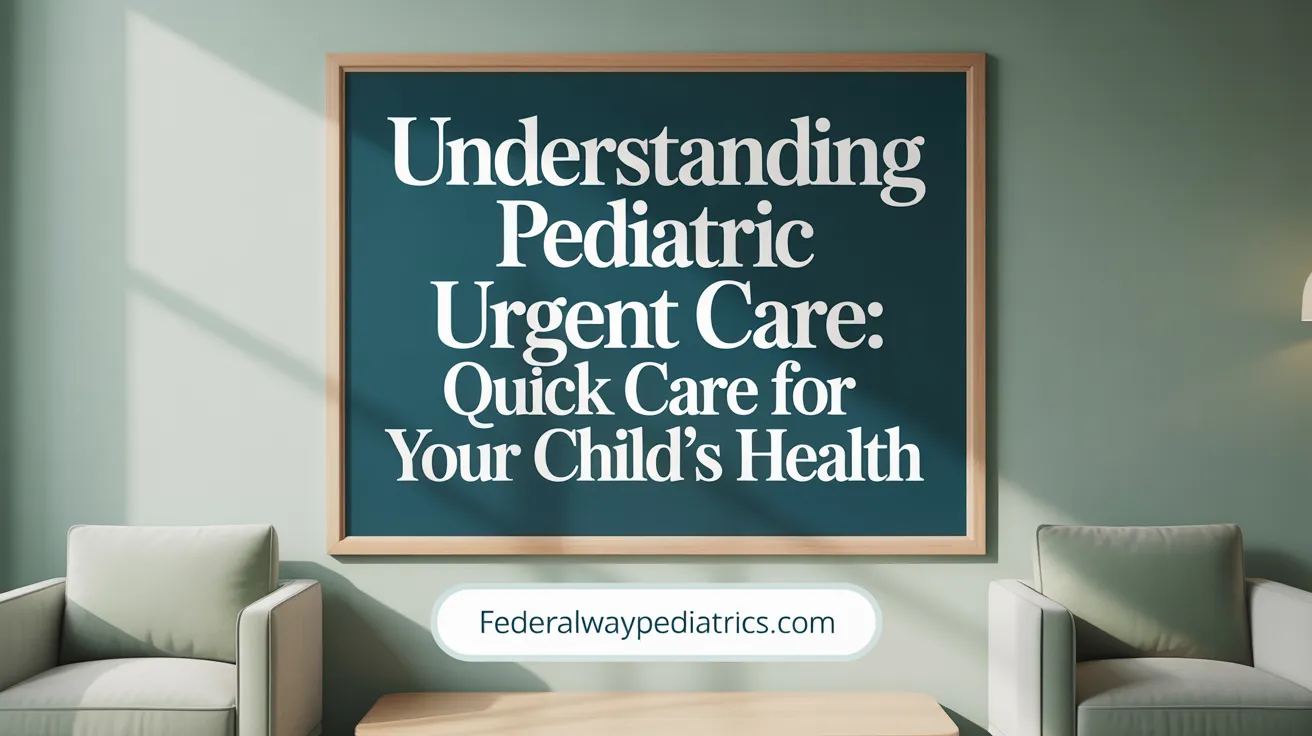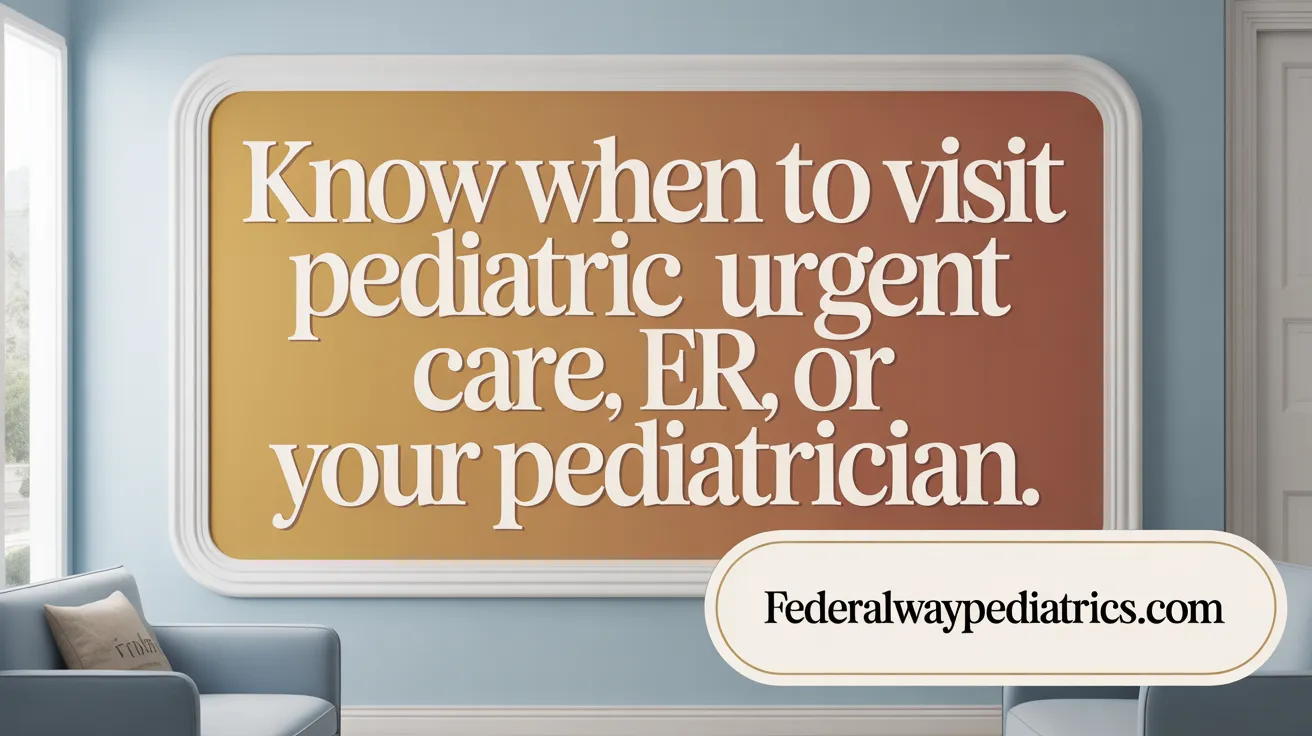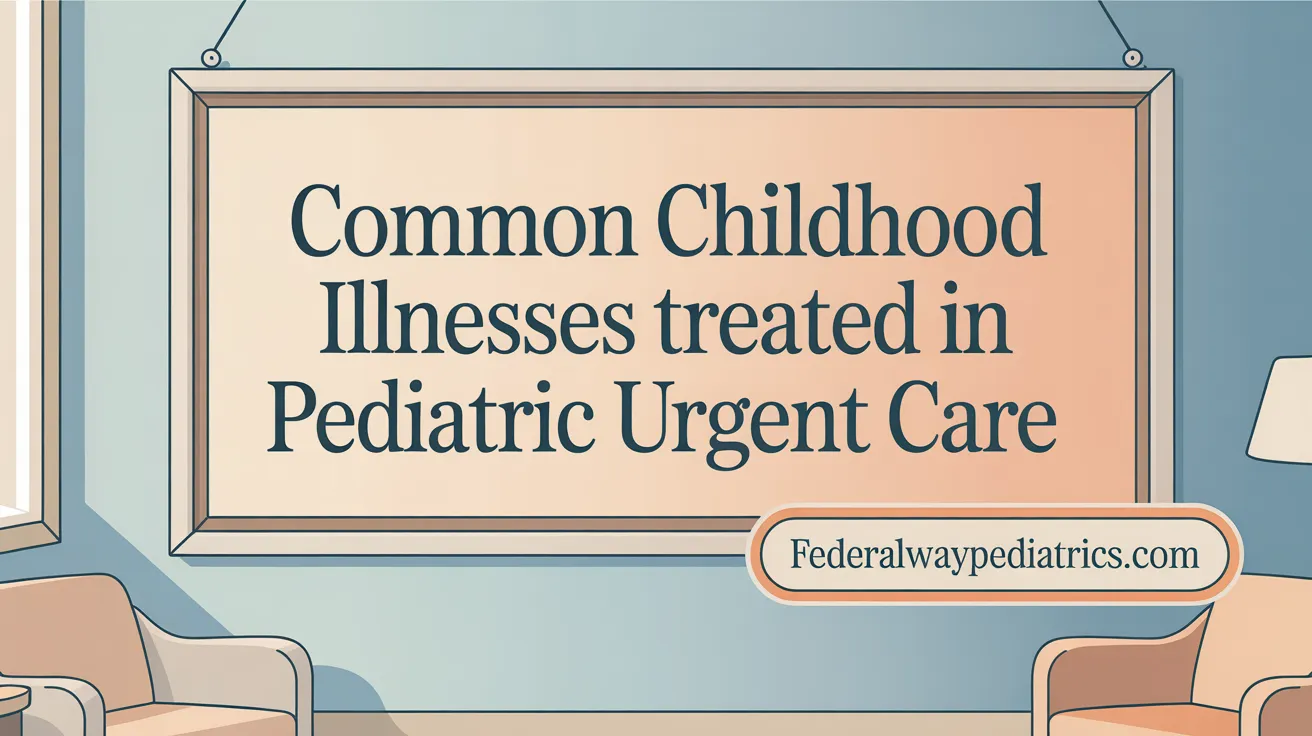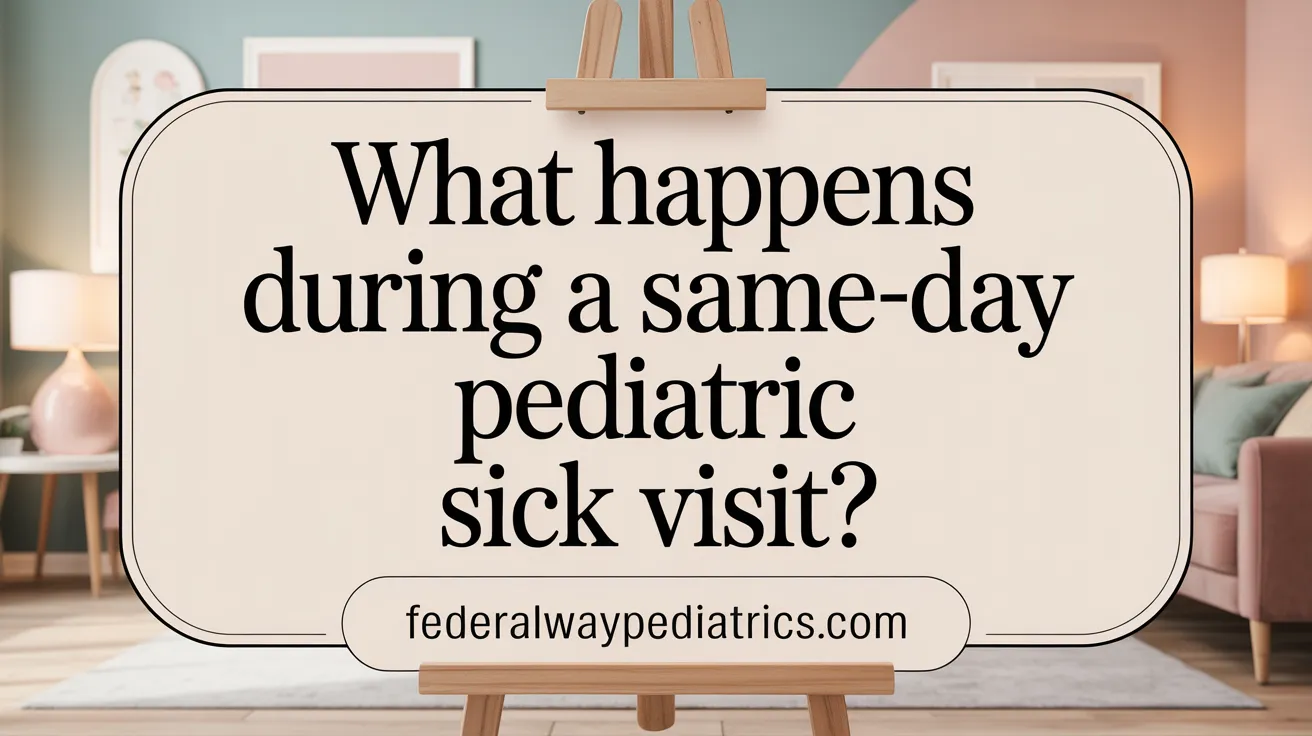Understanding Urgent Pediatric Care for Your Child
When a child falls ill suddenly, parents often face the difficult decision of when and where to seek medical care. Same-day sick visits offer a timely and convenient solution specifically designed to address non-life-threatening pediatric illnesses and injuries. This article guides you through the different pediatric care options, the conditions they treat, how to access same-day sick visits, and what to expect during your child’s urgent care appointment, enabling informed decisions for your child’s health and peace of mind.
What is Pediatric Urgent Care and How Does it Serve Families?

What is pediatric urgent care and what services does it typically provide?
Pediatric urgent care is a medical service dedicated to treating children who experience health issues that require prompt attention but are not life-threatening. It offers a convenient way for families to seek immediate care outside regular office hours, including evenings, weekends, and holidays.
Services commonly provided at pediatric urgent care centers include treatment for fevers, colds, minor injuries like sprains or cuts needing stitches, ear infections, sore throats, pink eye, rashes, and mild asthma attacks. Many clinics also perform quick diagnostic tests such as rapid strep, flu, and COVID-19 testing, and provide necessary medications.
Unlike emergency rooms, which focus on severe, life-threatening conditions, urgent care centers handle less severe issues efficiently and quickly. They are staffed by healthcare providers trained specifically in pediatric care, ensuring children receive age-appropriate treatment in a child-friendly environment. This helps reduce wait times and alleviates the burden on emergency rooms.
How does pediatric urgent care differ from emergency and regular pediatric care?
Emergency rooms are equipped to manage critical health emergencies like severe allergic reactions, unconsciousness, significant bleeding, or head trauma. They have advanced diagnostic tools and specialized staff available around the clock.
Regular pediatric offices focus on routine health care, such as checkups, immunizations, and management of chronic conditions. They also handle scheduled appointments for ongoing health needs.
Pediatric urgent care centers serve as an intermediate option. They are ideal for urgent but non-emergency issues, ensuring quick treatment without long waits, while still providing access to medical professionals trained in children’s health.
What role does pediatric urgent care play within the healthcare system for children?
Pediatric urgent care clinics play a vital role in providing accessible, immediate care for common childhood illnesses and minor injuries. They help ease the demand on emergency departments by handling non-life-threatening cases efficiently.
These facilities often operate with the goal of reducing unnecessary ER visits, offering a convenient alternative that still ensures children receive expert evaluation and care. They are especially crucial after hours or during weekends and holidays when primary pediatric offices may be closed.
Additionally, some clinics offer telehealth options, allowing families to consult healthcare providers virtually for initial assessments.
Overall, pediatric urgent care contributes to a balanced healthcare system by providing timely, specialized care that promotes quicker recovery while maintaining high standards of safety and comfort for young patients.
Making the Right Choice: Urgent Care, Emergency Room, or Regular Pediatric Visit?

How does pediatric urgent care differ from emergency rooms and regular pediatric visits?
Pediatric urgent care centers serve as a convenient middle ground between regular doctor visits and emergency rooms. They are designed for handling urgent, non-life-threatening issues that require quick attention outside regular office hours. Conditions like minor cuts, ear infections, mild wheezing, or signs of dehydration can often be managed here.
In contrast, emergency rooms (ER) are equipped for severe, potentially dangerous situations such as difficulty breathing, head injuries with loss of consciousness, high fevers in infants under 2 months, poisoning, or severe burns. ER staff have access to specialized diagnostic tools and specialists suited for critical health emergencies.
Regular pediatric visits are scheduled for routine care, including checkups, immunizations, and managing chronic health issues. They focus on preventive health rather than immediate treatment.
Recognizing symptoms that indicate the need for emergency care—such as trouble breathing, loss of consciousness, or severe dehydration—is vital. Parents can consult their pediatrician or urgent care services beforehand to determine the appropriate action.
Overall, urgent care provides faster access for less severe problems, emergency rooms are for critical emergencies, and routine visits support ongoing health maintenance and prevention.
Common Conditions Treated During Same-Day Pediatric Sick Visits

What are some common conditions treated during same-day sick visits and pediatric urgent care?
Same-day sick visits and pediatric urgent care centers are designed to provide timely treatment for a range of acute childhood illnesses and minor injuries. Typical illnesses managed include respiratory infections such as colds, flu, COVID-19, RSV, and other upper respiratory diseases. Children presenting with ear infections, sore throats—especially with white patches—stomach viruses, or gastrointestinal issues are routinely treated there.
Minor injuries are also handled efficiently, including cuts requiring stitches, sprains, minor fractures, and head injuries that do not involve skull or brain trauma. Skin conditions like rashes, hives, and minor burns are common reasons for visits, along with allergic reactions that are not severe. Mild asthma attacks, eye infections, and symptoms such as persistent vomiting, diarrhea, and dehydration are addressed swiftly.
These clinics aim to diagnose the cause of symptoms, provide immediate treatment, and offer guidance on symptom management or when further medical evaluation is necessary. They serve as a convenient option for parents seeking quick, expert care for their children’s health issues that are urgent but not life-threatening.
What to Expect During a Same-Day Pediatric Sick Visit

Visit procedures
During a same-day pediatric sick visit, parents should anticipate a structured assessment process. The child will first undergo a physical examination by the pediatric provider. This involves measuring vital signs such as temperature to check for fever, as well as heart rate and blood pressure to assess overall health status.
The healthcare provider will examine different areas depending on symptoms, including the throat, ears, lungs, and skin. This comprehensive check helps identify the cause of illness, whether it’s an ear infection, sore throat, or other common infections.
Assessment and diagnostic steps
The pediatrician will ask detailed questions about when symptoms started, how they have developed, and their severity. They might request information about recent exposures to illnesses, changes in behavior, appetite, or activity levels. Diagnostic tests like rapid strep, flu swabs, or COVID-19 tests may be performed during the visit for quick results.
Some clinics use point-of-care testing, enabling instant diagnosis and treatment decisions. This helps in swiftly identifying illnesses like strep throat or influenza, allowing parents to start appropriate medications without delay.
Treatment and follow-up instructions
After assessment, the provider will discuss treatment options tailored to the child's condition. This may include prescribe medications such as antibiotics for bacterial infections, or recommending supportive care like fluids, rest, and over-the-counter remedies for viral illnesses.
Parents will also receive guidance for home care, including instructions on managing symptoms and signs to watch for that may indicate worsening of the illness. The provider might schedule follow-up visits if necessary, especially in cases of persistent or worsening symptoms.
Patient and parent experience
Parents can generally expect friendly, compassionate care in a child-friendly environment. Many clinics prioritize minimizing wait times and creating a supportive atmosphere for children, with engaging decor and staff trained to handle young patients.
Clear communication is emphasized, including explanations about the child's condition, tests, and treatment plans in simple language. This approach reassures both the child and parent, ensuring a positive experience even during sick visits.
Overall, a same-day pediatric sick visit aims for prompt, effective diagnosis and treatment of common illnesses, providing peace of mind for families and helping children recover quickly.
Benefits and Accessibility of Same-Day Sick Visits for Children

What are the benefits of using same-day sick visits for children's healthcare?
Same-day sick visits are a valuable resource for parents seeking immediate help for their children. These visits ensure prompt evaluation and treatment by pediatric specialists familiar with children's health needs. Early assessment allows for quick diagnosis of common illnesses like the flu, ear infections, or asthma attacks, which can prevent complications and ease discomfort.
One major advantage is the ability to contain infectious diseases, reducing the spread among other children and families. These visits also offer flexible scheduling, often on the same day, reducing parental stress and avoiding long wait times or unnecessary trips to the emergency room.
Cost-wise, they are usually less expensive than emergency room visits, promoting more frequent and accessible healthcare. Overall, same-day sick visits contribute to better health outcomes by ensuring timely, targeted care while fostering trust and ongoing relationships between families and healthcare providers.
Making Informed Choices for Your Child’s Health
Navigating urgent pediatric care can be challenging, but knowing when and where to seek help is essential to ensuring your child's health and well-being. Same-day sick visits provide accessible, child-focused care for common illnesses and minor injuries, bridging the gap between regular pediatric appointments and emergency room care. By understanding the differences among care options, recognizing symptoms that require emergency attention, and leveraging extended hours and telehealth services, parents can confidently choose the best path for their child’s urgent health needs. Prompt and appropriate care not only improves recovery outcomes but also provides peace of mind during stressful times, underscoring the vital role of pediatric urgent care in today’s healthcare landscape.
References
- Urgent Care Versus the ER A Pediatrician Offers Tips on ...
- Pediatric Urgent Care | After-Hours Clinic
- How Same-Day Sick Visits Are Different From Urgent Care ...
- Pediatric Urgent Care | Same-Day Sick Visits for Kids
- Same-Day Sick Visit - American Pediatrics
- Same Day Sick Visits | Pediatrician In Pleasanton, CA
- Should we go to the emergency room, urgent care or ...
- Pediatrician Same-Day Appointment: A Guide for Parents
- Sick Visits & After Hours
- Mountain View Center Pediatric Urgent Care
